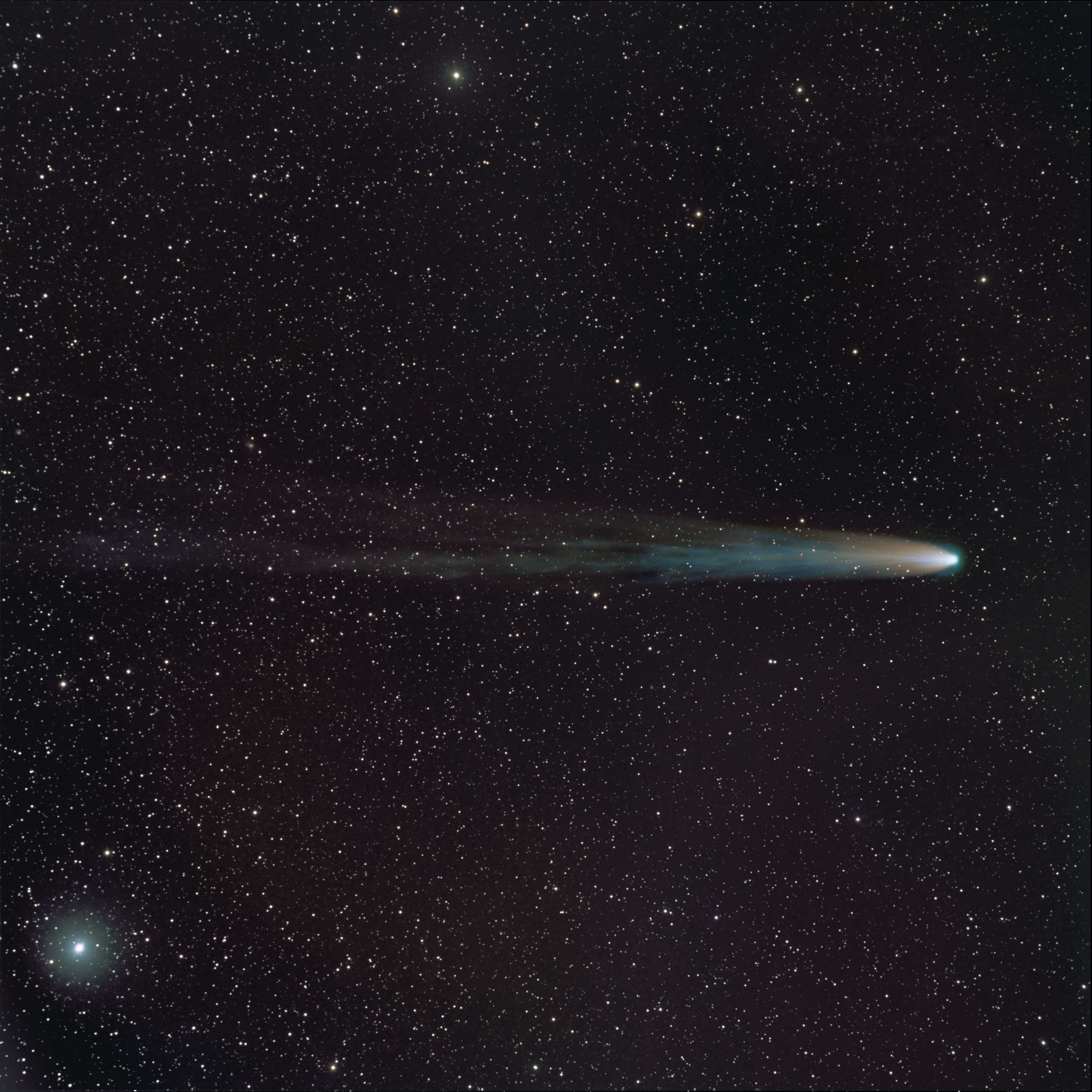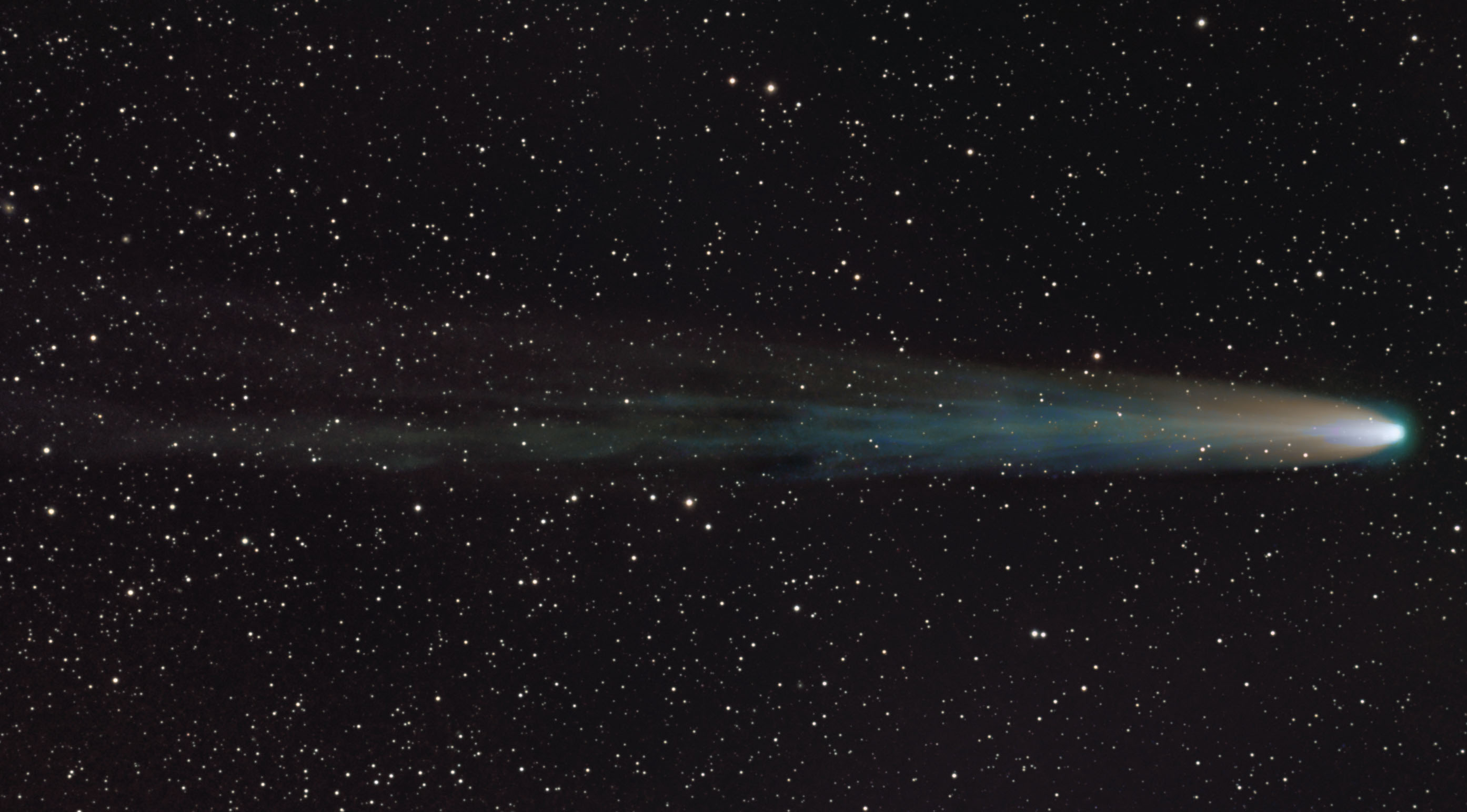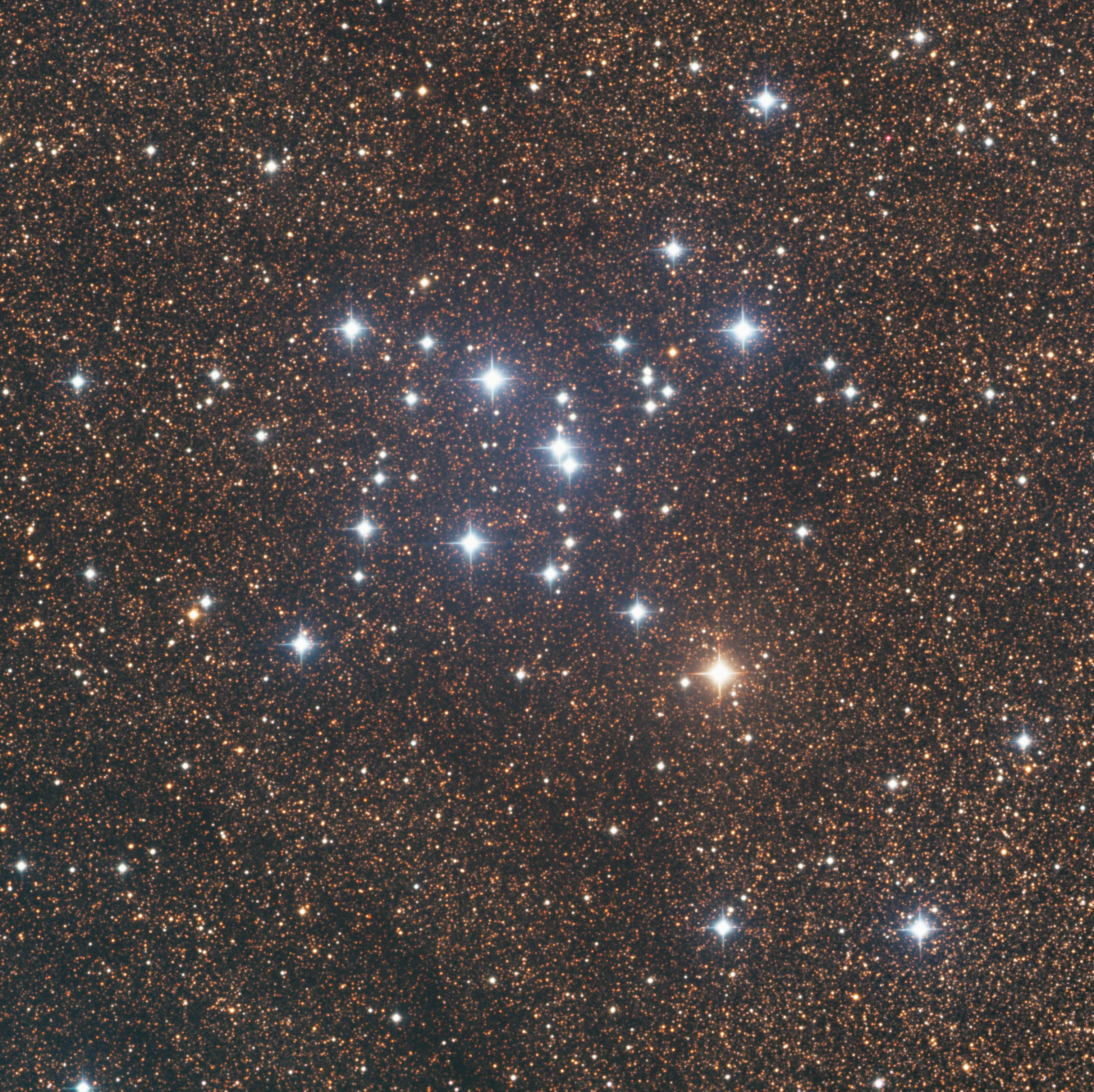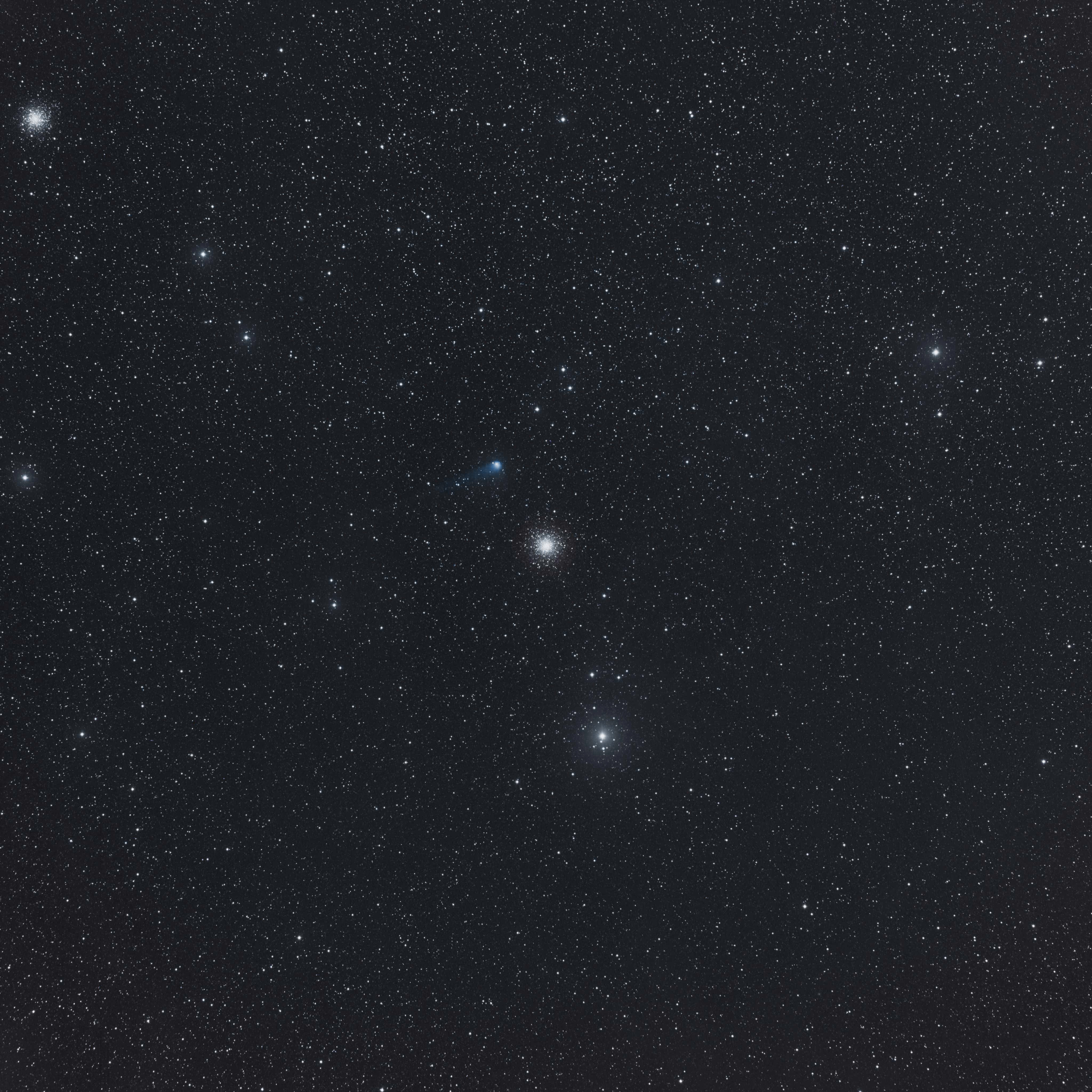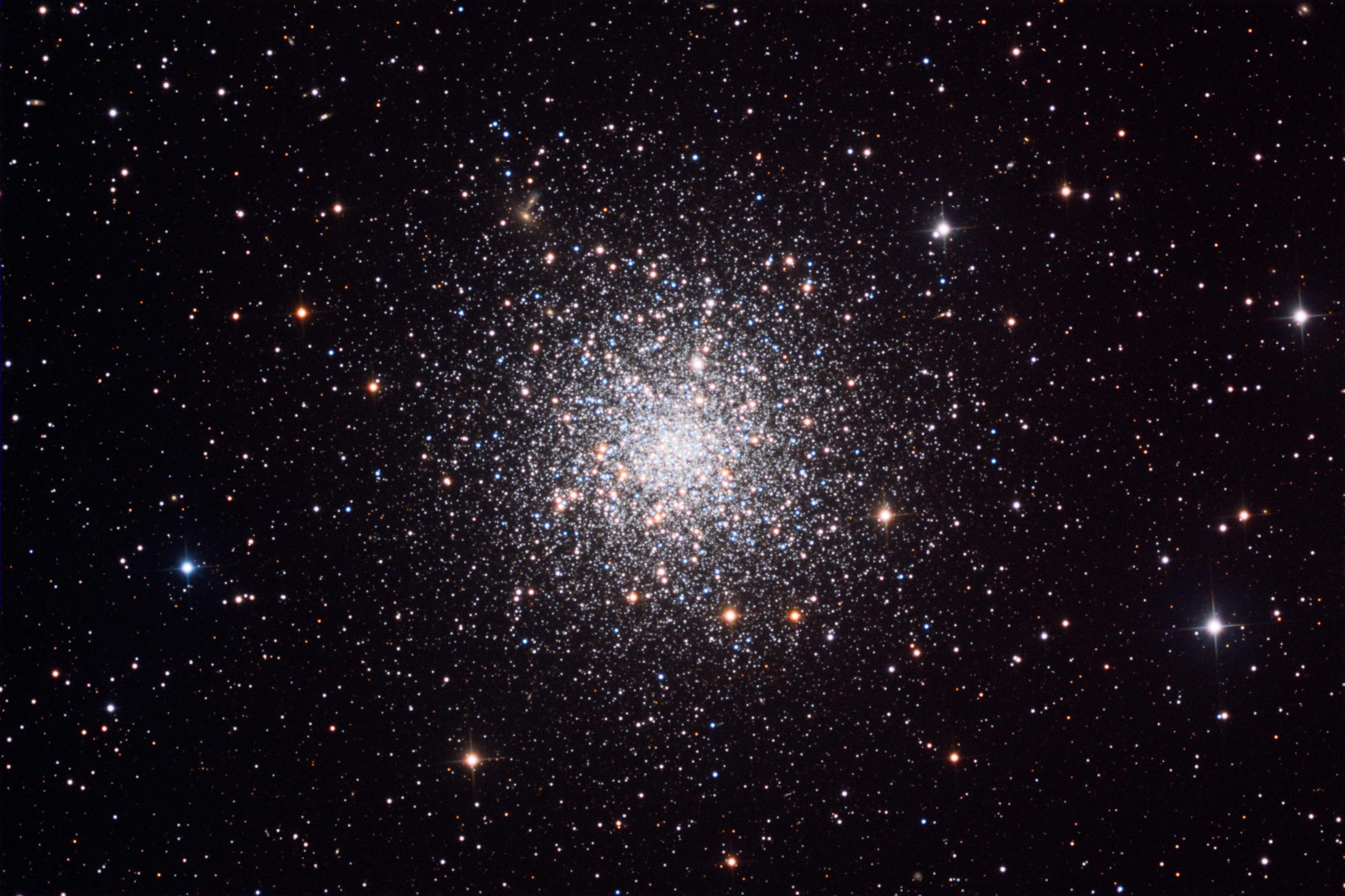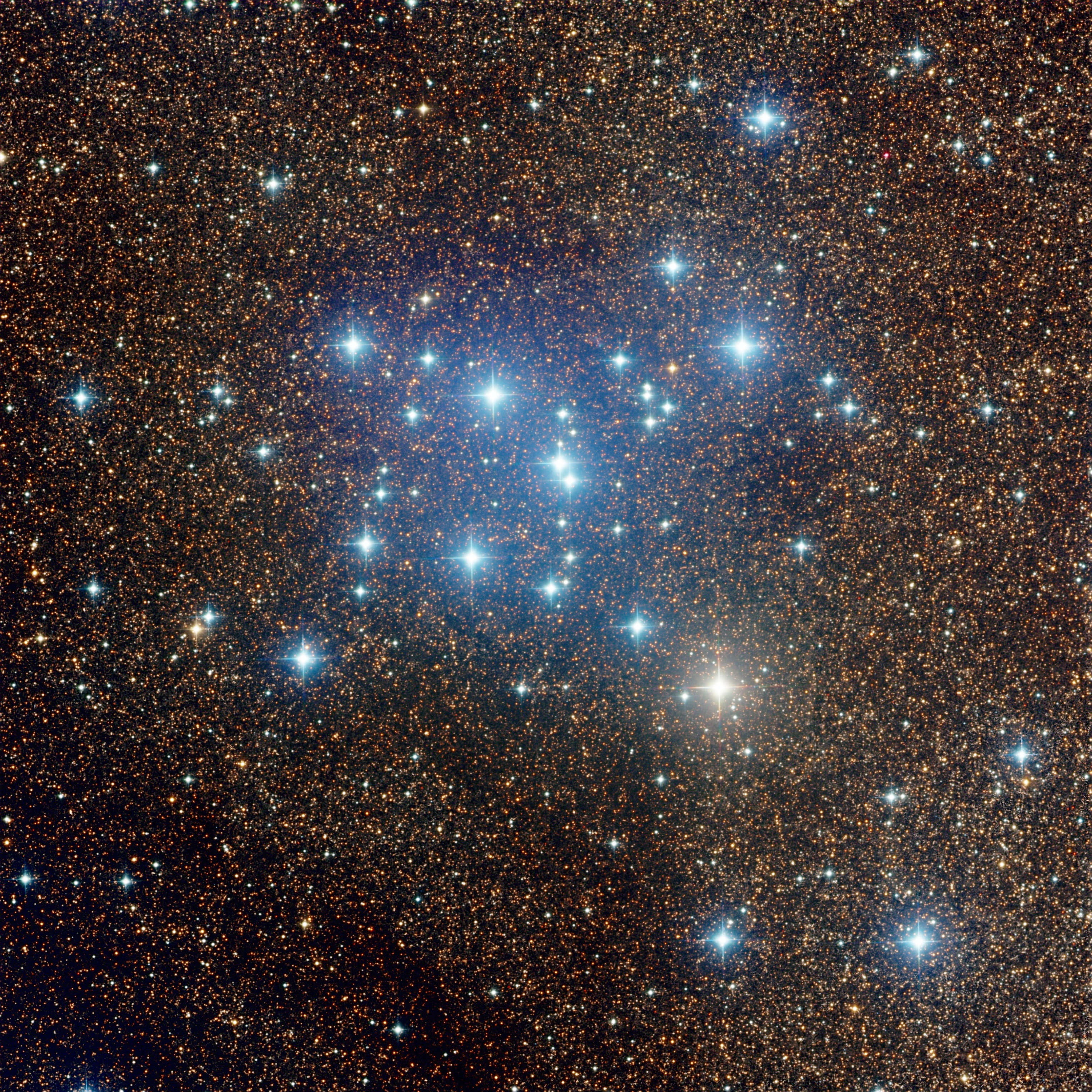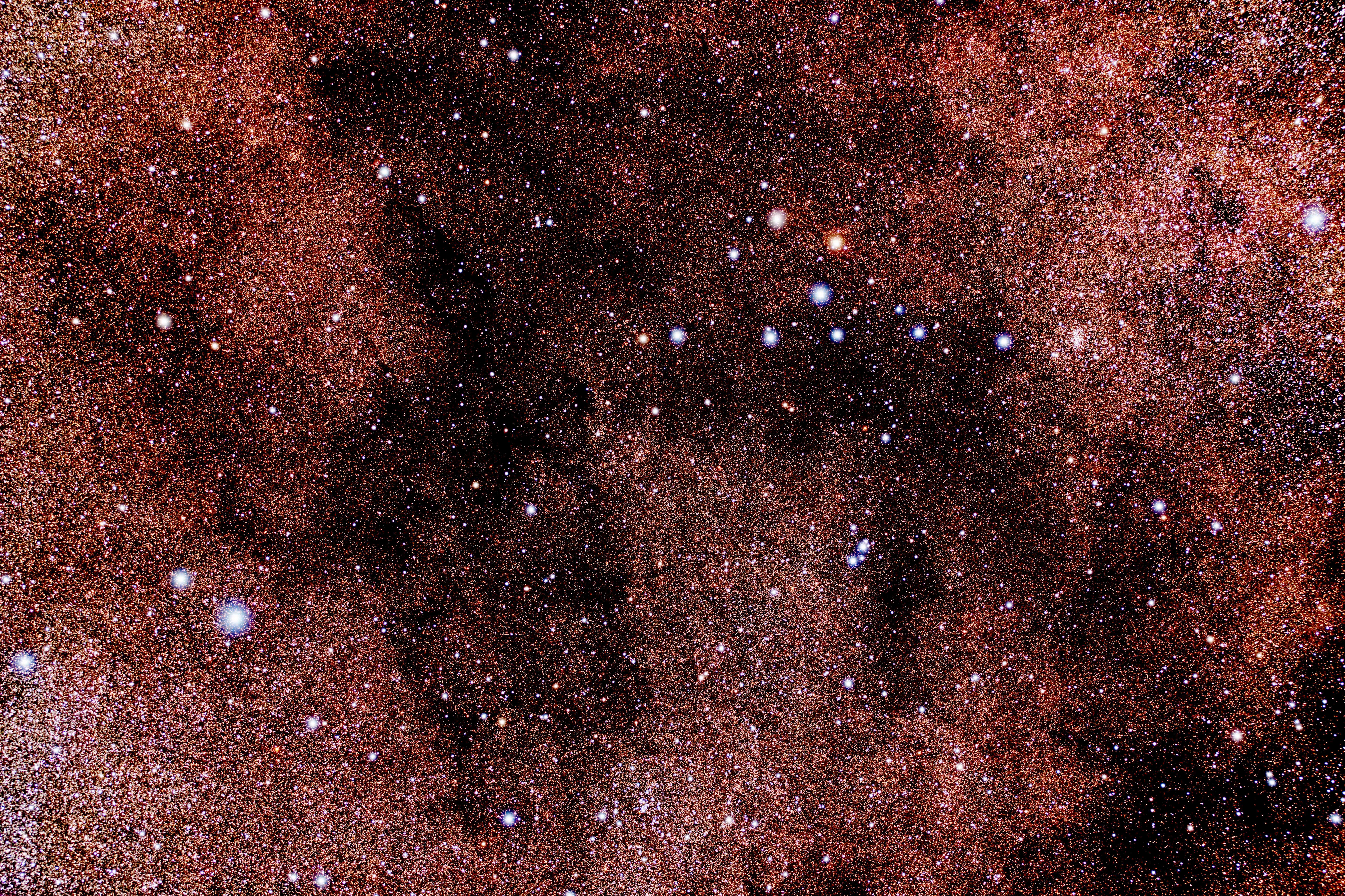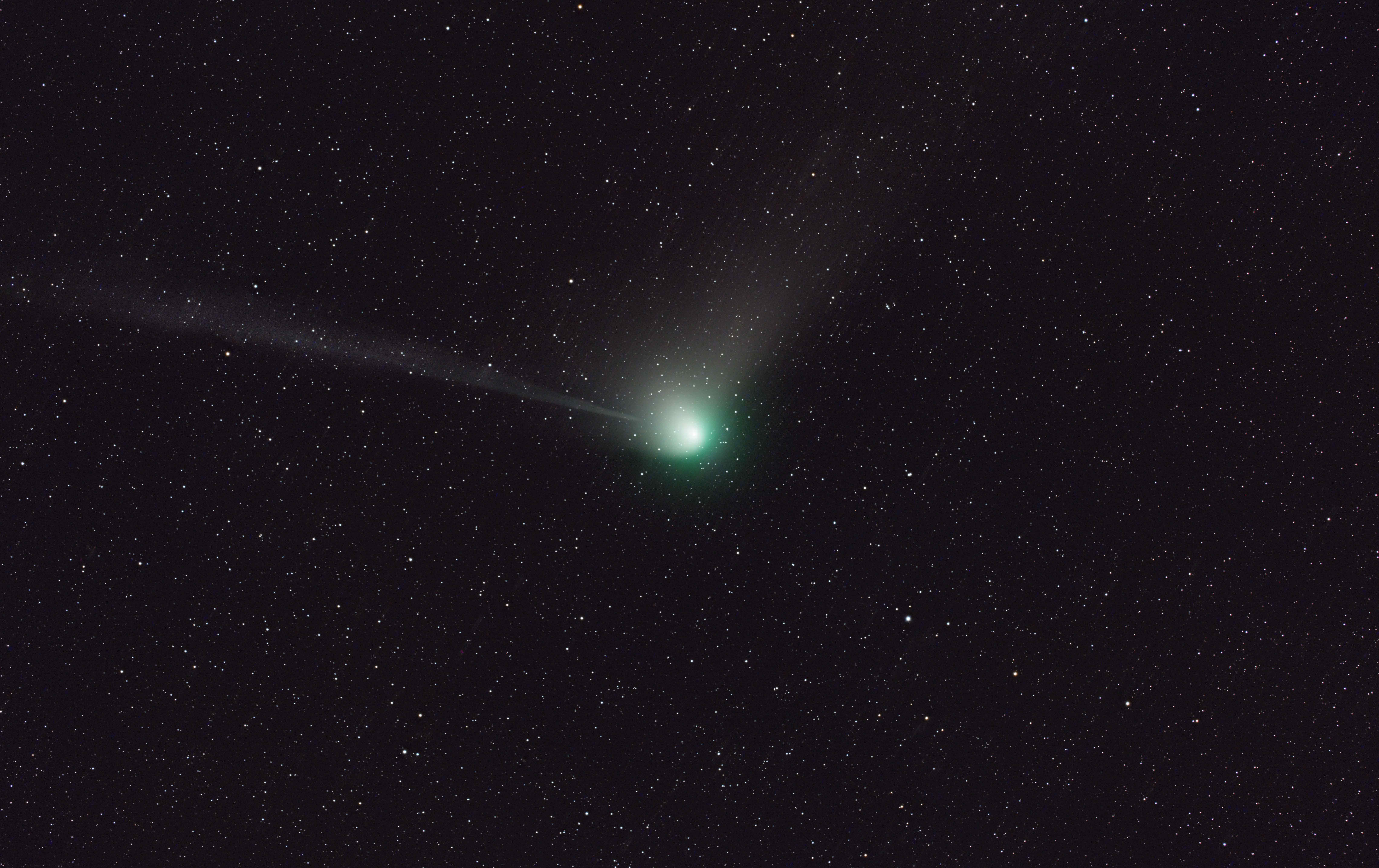| Early Images -
Saturn, Jupter and The Great Otion Nebula (M42) These are my first attempts at planetary imaging - along with the Great Orion Nebula. All of them were taken in 2007 from my back deck which is about twenty feet high and jiggles just enough to really goof up any image. Also, these are all unguided images of only 1 or 3 minutes. An Alt/Az mount is notoriously difficult to polar align well enough for unguided imaging as is evident here :) |
My Very First
Images - The Moon I started imaging way back in 2007 with my Meade 10" f/10 SCT. These are some of the first images I did with my brand new SBIG ST-4000xcm OSC camera with the 10" scope on my new Losmandy G-11 equatorial mount. |
Comet Hartley
Animation - 103P/Hartley This was a fun project as part the astro photography class I was taking at Cabrillo College. Dr. Rick Nolthenius had taken a series of images of Comet Hartley. The comet's faint tail is just barely visible at the 2 o'clock position. I used five of the subs to create this .gif animation. |
|
Location: La Selva Beach, CA Date: December 2007 Mount: Meade Alt/Az Telescope: Meade 10" f/10 SCT Camera: Meade OSC Exposure: 0.25 sec |
Location: La Selva Beach, CA Date: April 2008 Mount: Losmandy GM-8 Telescope: Meade 10" f/10 SCT Camera: SBIG ST-4000xcm OSC Exposure: 1 or 3 minutes. |
Location: Unknown Date: Unknown Mount: Unknown Telescope: Unknown Camera: Unknown Exposure: Unknown |
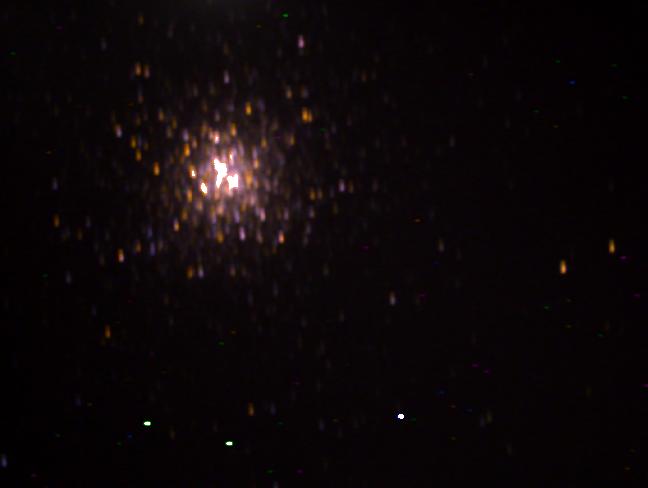 |
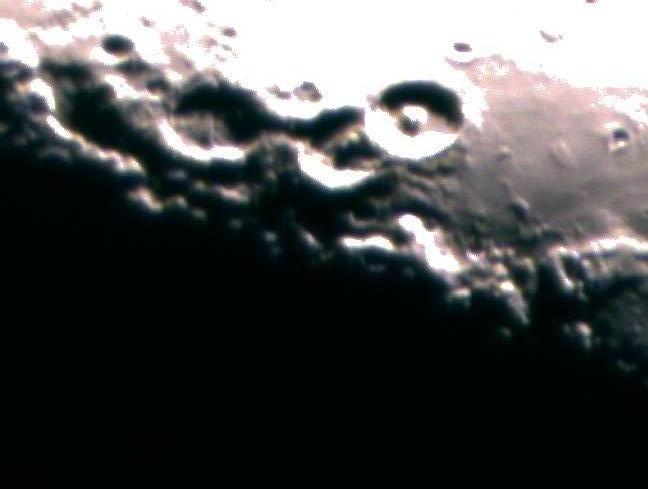 |
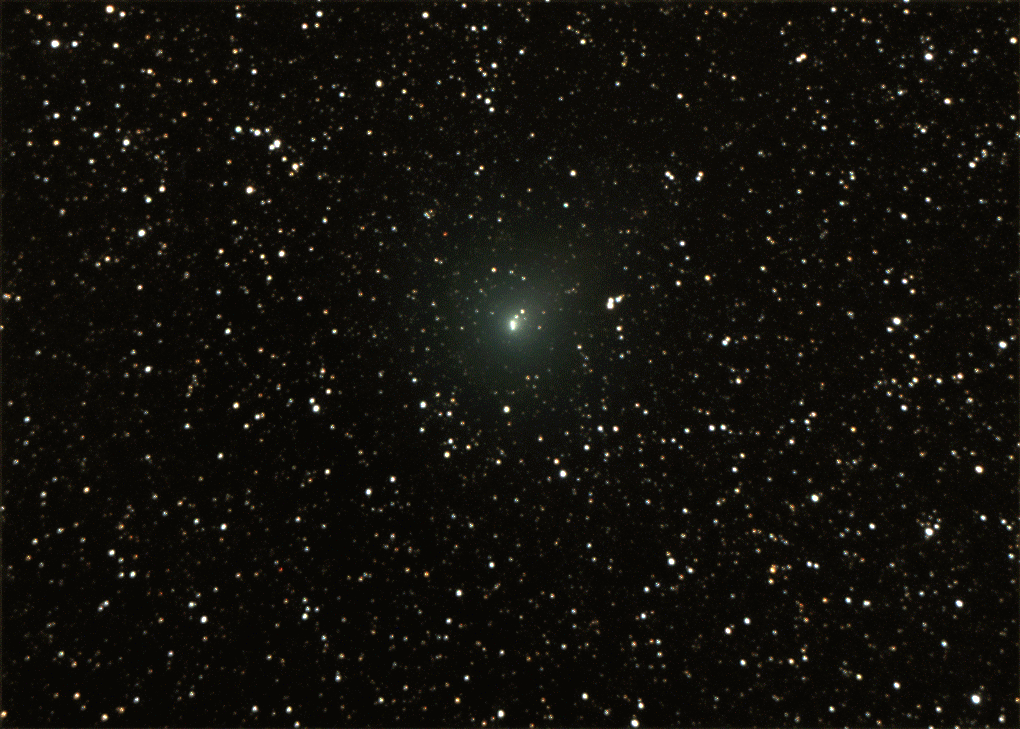 |
| Messier 5 Messier 5 is a globular cluster discovered by Gottfried Kirch in 1702. It is about 24 million light years away. It has a diameter of 165 light years, and is 13 billion years old with between 100,000 and 500,000 stars. It is one of the oldest globular clusters yet discovered. |
Messier 11 - The
Wild Duck Cluster Messier 11, also known as the Wild Duck Cluster is an open cluster discovered by Gottfried Kirch in 1681. It is about 220 million years old and contains around 2900 stars. |
Messier 13 - The
Great Hercules Cluster Messier 13 is a globular cluster with approximately 500,000+ stars. It is 25,000 light years away and 145 light years in diameter. In 1974 a radio message was sent to M13 from the radio telescope at Arecibo, Puerto Rico. The message contains information on different aspects of the human race. |
|
Location: Bonny Doon Airport, CA Date: May 13, 2012 Mount: Losmandy G11 Go-To Telescope: Orion 190mm f/5.3 Mak/Newt Camera: SBIG ST-4000xcm OSC @ -18 Exposure: 18x3min. subs = 54min. |
Location:
Cabrillo College Observatory, CA Date: September 30, 2009 Mount: Losmandy GM-8 Telescope: Meade LDX-75 8" f/4 Camera: SBIG ST-4000xcm OSC @ -23c Exposure: 4x5min. subs = 20min. |
Location: Bonny Doon Airport, CA Date: October 2, 2010 Mount: Losmandy G11 Go-To Telescope: Orion 190mm f/5.3 Mak/Newt Camera: SBIG ST-4000xcm OSC @ -16c Exposure: 1x10min. = 10min. |
 |
 |
 |
| Messier 34 Messier 34 is an open cluster that lies 7200 light years from us. it was first discovered by Giovanni Batista Hodierna sometime before 1654 and was later added to Messier's list in 1764. This cluster holds around 400 stars, and at least 19 of these are white dwarfs. |
Messier 45 - The
Pleiades Messier 45, sometimes known as The Seven Sisters, is an open cluster. It's made up of a number very hot blue stars that formed within the last 100 million years. The cluster is moving through an interstellar dust cloud and illuminating the dust which makes the dust cloud a reflection nebula. |
Messier 71 Messier 71 is a globular cluster that was discovered by Philippe Loys de Cheseaux in 1746. It is about 13,000 light years away and is at least 25 light years across. It is about 9 billion years old. |
|
Location: Borrego Springs, CA Date: October 29, 2011 Mount: Losmandy G11 Go-To Telescope: Orion 190mm f/5.3 Mak/Newt Camera: SBIG ST-4000xcm OSC @ -12c Exposure: 20x1min. subs = 20min. |
Location: Bonny Doon Airport,
CA Date: October 23, 2011 Mount: Losmandy G11 Go-To Telescope: Orion 190mm f/5.3 Mak/Newt Camera: SBIG ST-4000xcm @ -14 Exposure: 6x10min. subs = 1hr. |
Location: Bonny Doon Airport, CA Date: October 22, 2011 Mount: Losmandy G11 Go-To Telescope: Orion 190mm f/5.3 Mak/Newt Camera: SBIG ST-4000xcm OSC @ -14c Exposure: 20x1min. subs = 20min. |
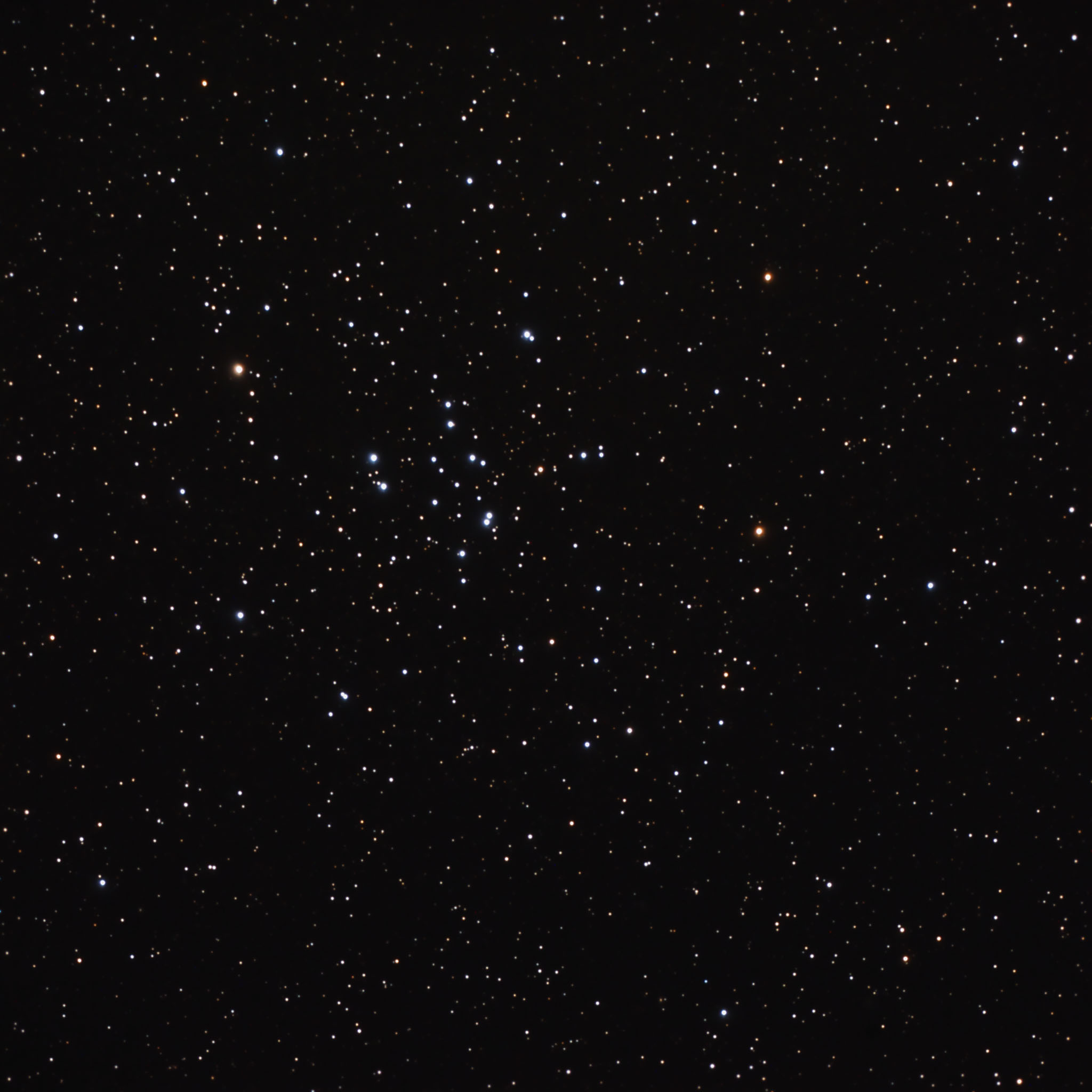 |
 |
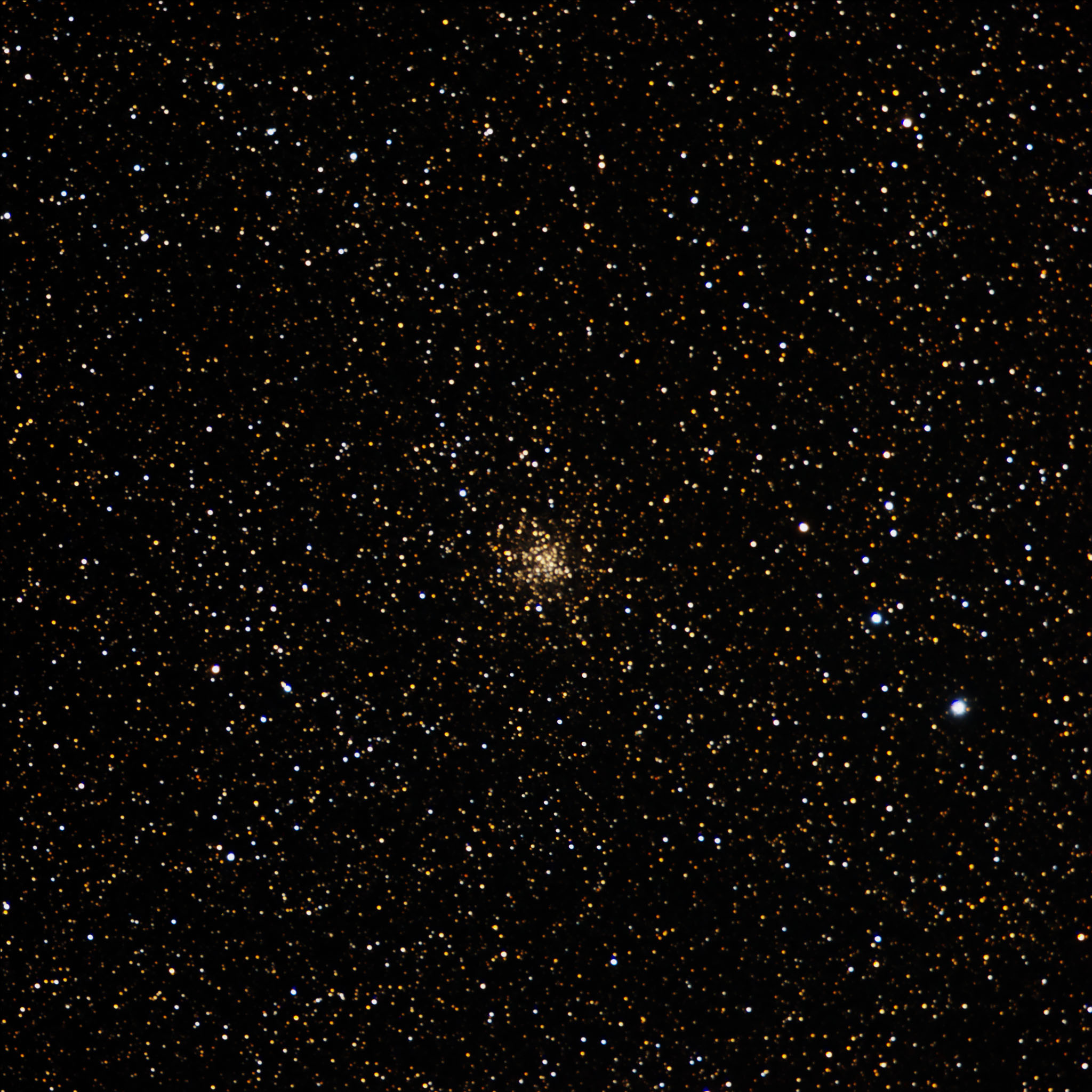 |
| Comet Lulin -
C/2007 N3 (Lulin) Comet Lulin is a long period comet - which means that it has an orbital period of at least 200 years or more. Long period comets have near-parabolic orbits and generally will not return to the inner solar system for hundreds or even thousands of years. It's possible that they may visit the inner solar system just once. This comet was first imaged at the Lulin Observatory in Taiwan in 2007, but was only identified by a 19-year old Chinese student from the photos taken in Taiwan. This image was taken on a field trip with my astro photography class near Big Sur in March of 2009. |
Jupiter Impact This image is a stacked series of approximately 1300 video frames taken by Dr. Rick Nolthenius in 2009. The dark spot in the upper right of Jupiter is the scar left in the atmoshere from a comet impact also in 2009. The white spot to the upper left is one of Jupiter's several moons. Jupiter is so large that it would hold over 1300 Earths. I stacked the video frames with Registax and then processed it in Photoshop. Jupiter's South Pole is in the upper right. |
Moon and Boeing
757 This one of my favorite images. It was the first time I tried to image the Moon at Bonny Doon Airport. I had set up to take a series of 10 images at .015 seconds exposure time. The Moon was low in the West (looking toward the north/south high altitude airline routes just off the coast) and about to go behind some trees. When I got home late that night I checked out the pictures and initially thought that a bug had landed on the telescope. As I zoomed in a bit I realized that I had accidentally captured a Boeing 757 crossing the Moon. I never would have been able to capture this if I had been trying. :) |
|
Location: Big Sur, CA Date: March 2009 Mount: Losmandy GM-8 Telescope: Meade LDX-75 8" f/4 Camera: SBIG ST-2000xcm OSC @ -25c Exposure: 1x10min. = 10min. |
Location: Unkown Date: 2009 Mount: Unknown Telescope: Unkown Camera: Unknown Exposure: Unknown |
Location: Bonny Doon Airport, CA Date: August 14, 2010 Mount: Losmandy G11 Go-To Telescope: Meade 10" f/10 SCT Camera: SBIG ST-4000xcm OSC @ -18c Exposure: 1x .015sec. = .015sec. |
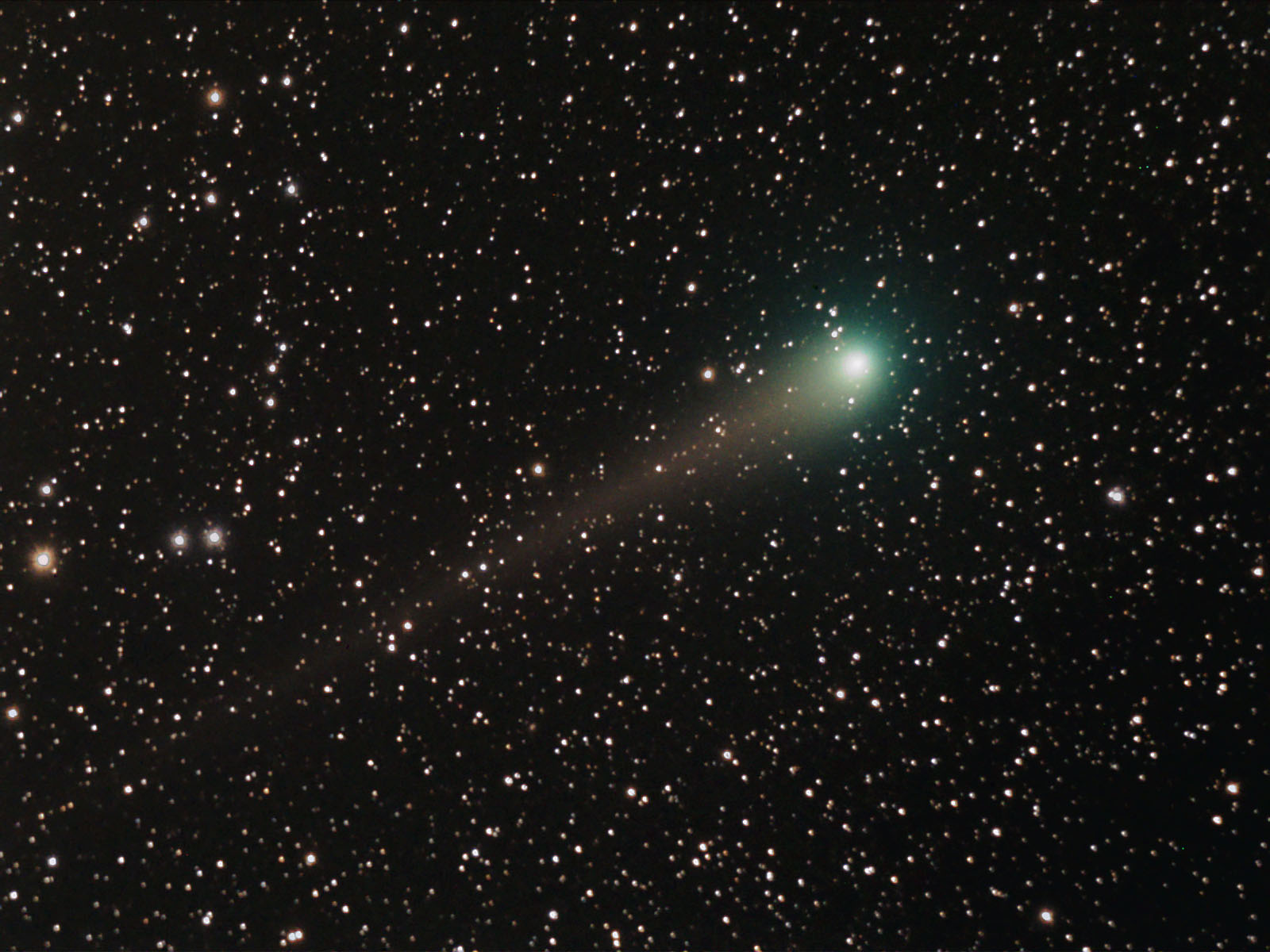 |
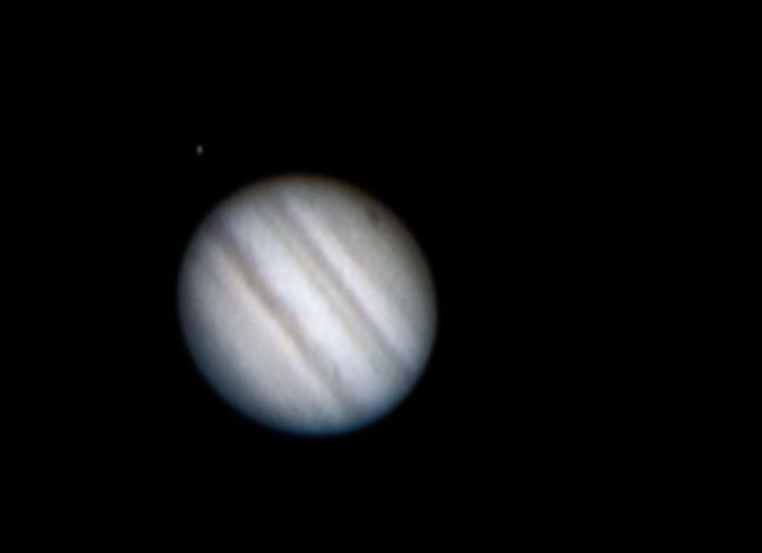 |
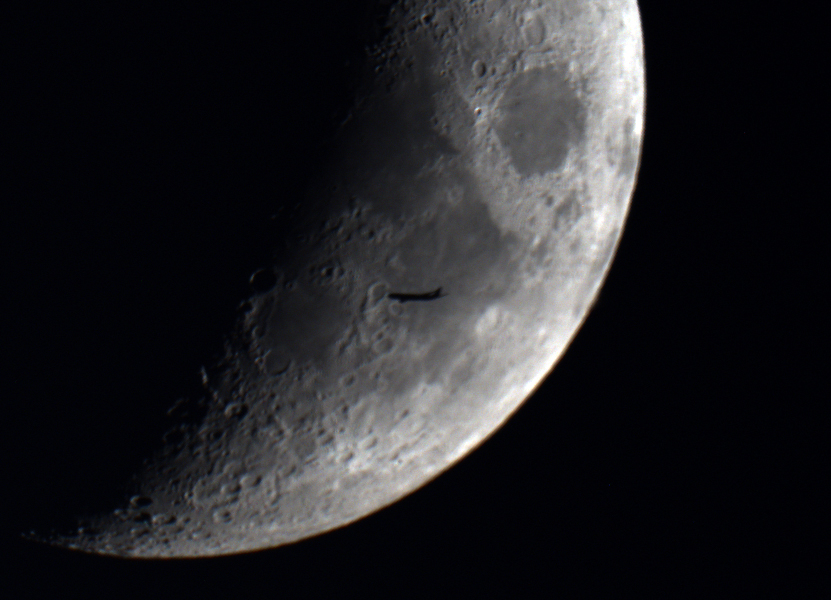 |
| Moon This image was the first I ever took. it was taken during my first astro photography class at Cabrillo College with Dr. Rick Nolthenius. The area in the middle is Mare Imbruim. |
Moon This is the original image of the image to the left. |
Moon Taken at Bonny Doon Airport in August of 2010. |
|
Location: Cabrillo College Observatory, CA Date: September 10, 2008 Mount: Meade Alt/Az Mount Telescope: Meade 10" f/10 SCT Camera: SBIG ST-4000xcm OSC @ -20c Exposure: 1x .01sec. = .01sec. |
Location: Cabrillo College Observatory, CA Date: September 10, 2008 Mount: Meade Alt/Az Mount Telescope: Meade 10" f/10 SCT Camera: SBIG ST-4000xcm OSC @ -20c Exposure: 1x .01sec. = .01sec. |
Location: Bonny Doon Airport, CA Date: August 14, 2010 Mount: Losmandy G11 Go-To Telescope: Meade 10" f/10 SCT Camera: SBIG ST-4000xcm OSC @ -18c Exposure: 1x .015sec. = .015sec. |
 |
 |
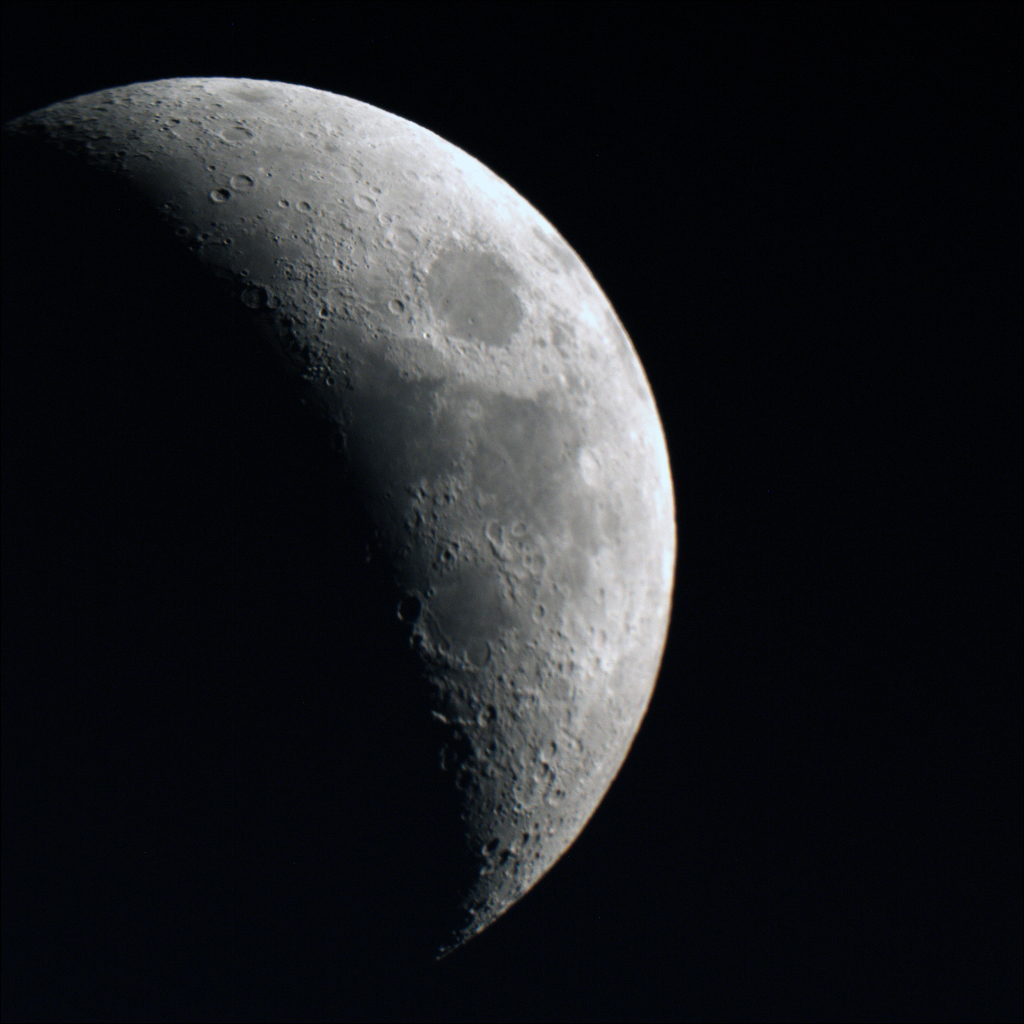 |
| NGC 457 - The
Owl Cluster In the spring of 2016 I purchased a new camera - an SBIG STF-8300m along with an 8-position filter wheel. Integral to the filter wheel is an Off-Axis-Guider with a fairly wide FOV. This image is my "First Light" image with this camera. The object is NGC 457, an open star cluster in the constellation Cassiopeia. It is about 7900 light years away from us, and around 21 million years old. It was first observed by William Herschel in 1787. It is also referred to as the Owl CLuster or the E.T. Cluster. This is my original - the image to the right is the same image - just spiced up a bit with some star spikes. On this trip to Borrego springs we had a tough time with turbulent atmosphere so I suspect that this image could have been focused just a tad better. Sorry 'bout that:) An auto-focuser is next on my wish list. |
NGC 457 - The
Owl Cluster This is the same image as the one to the left - just spiced up a bit with some star spikes. In looking closely through this image and comparing it to the same region in The Sky X planetarium program - I found that a good percentage of the stars in this image are double star systems. Using a filter wheel and processing a true RGB image is a new way of imaging for me, so I expect to be fighting the 'ol learning curve again. Although this would be a great opportunity to re-image a lot DSOs. |
Neptune Neptune is the eighth and farthest known planet from the Sun in the Solar System. In the Solar System, it is the fourth-largest planet by diameter, the third-most-massive planet, and the densest giant planet. Two billion miles from Earth and 15,300 miles diameter. One Neptune orbit around the Sun takes 165 of our years. Nuptune sports at least thirteen moons. After painstakingly comparing this image with my planetarium program (TheSkyX) I can definitely say the big blue dot near the center is Neptune. |
|
Location: Borrego Springs, CA Date: October 27, 2016 Mount: AP900 GTO Telescope: Celestron 9.25" f/10 Cassegrain Camera: SBIG STF-8300m @ -12c Exposure: 04x05min. subs = 20 Min. |
Location: Borrego Springs, CA Date: October 27, 2016 Mount: AP900 GTO Telescope: Celestron 9.25" f/10 Cassegrain Camera: SBIG STF-8300m @ -12c Exposure: 04x05min. subs = 20 Min. |
Location: Borrego Springs, CA Date: October 19, 2017 Mount: AP900 GTO Telescope: Celestron 9.25" f/10 Cassegrain Camera: SBIG STF-8300m @ -08c Exposure: 04x01min. subs = 4 Min. |
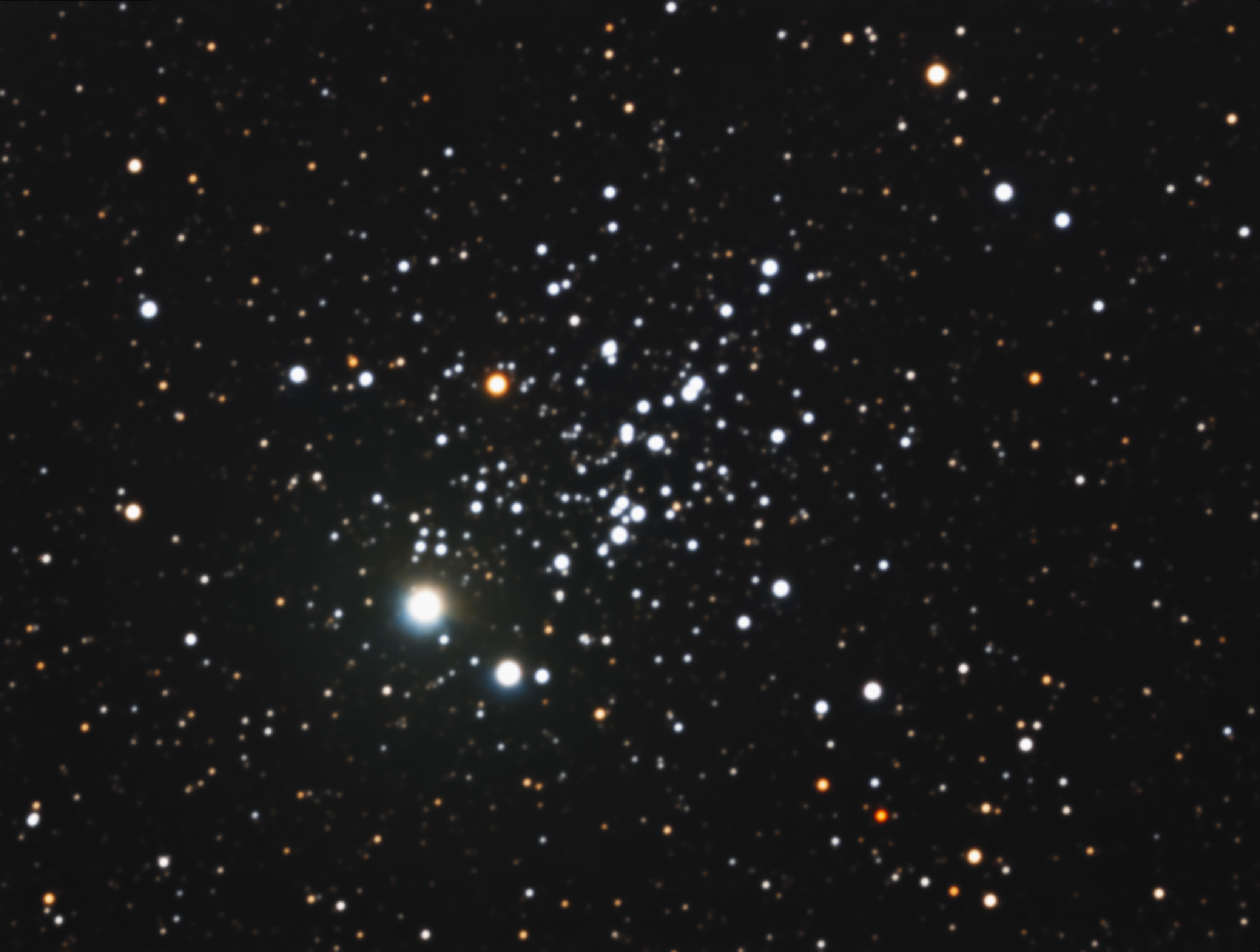 |
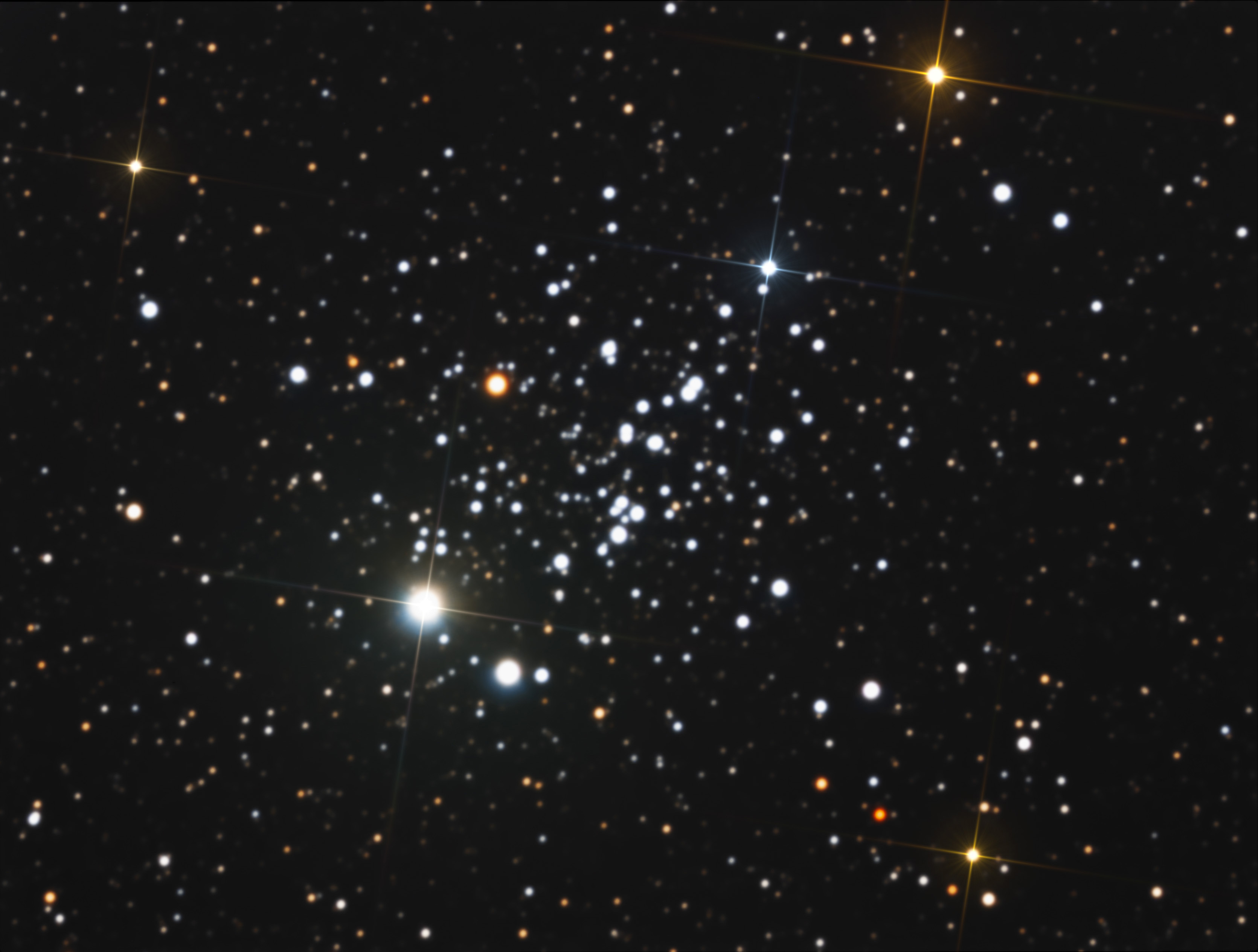 |
 |
| NGC
5139 - Omega Centauri Omega Centauri was first cataloged by Ptolemy in Greece in 150 A.D. At a distance of 16,000 light years and a diameter of 150 light years, it is the most massive globular cluster in the Milky Way. It is estimated to contain around 10 million stars and has a total mass of 4 million solar masses. The stars in the core of Omega Centauri are so crowded that they are estimated to average only 0.1 light years away from each other. It has been speculated that Omega Centauri is the core of a dwarf galaxy that was disrupted and absorbed by the Milky Way. Image processed by Ron Yelton, original data from Telescope Live |
NGC 104 This globular cluster was first recorded in 1751-2 by Nicolas-Louis de Lacaille, who initially thought it was the nucleus of a bright comet, and later added to the Messier list as Messier 1 by Charles Messier. In the constellation Tucana, and lying 13,000 light-years away, NGC 104 (47 Tucanae) is the second brightest globular cluster behind Omega Centauri. Current thinking is that this globular cluster contains about 10,000 stars and may be around 13 billion years old, which is unusually old. This cluster contains numerous x-ray sources and also has 25 known millisecond pulsars. In December 2008, Ragbir Bhathal of the University of Western Sydney claimed the detection of a strong laser-like signal from the direction of 47 Tucanae. Image processed by Ron Yelton, original data from Telescope Live |
Nicolas Louis de Lacaille first discovered this open cluster in the constellation Crux back in 1751-52 while populating his catalog at the Cape of Good Hope in South Africa. The cluster was later named The Jewel Cluster by John Herschel, who described it as "a superb piece of fancy jewelry." Herschel recorded over 100 members of this cluster in 1834-1838. Its age is estimated at around 14 million yrs. and is the youngest known cluster. It lies about 6,400 light-years from Earth. Image processed by Ron Yelton, original data from Telescope Live |
|
Location: El Sauce Observatory,
Chile Date: January 1, 2020 Mount: Mathis MI-1000 Telescope: Planewave CDK24 f/6.6 Camera: FLI PL9000 @ -25c (CHI-1) Exposure: 3 x 5min each for RGB. Total 15 min. |
Location: El Sauce Observatory, Chile Date: October 21, 2020 Mount: ASA DDM85 Telescope: ASA 500N Camera: FLI PL16803 @-25 (CHI-2 50mm) Exposure: 6 x 3min each for RGB. Total: 1 hr. |
Location: El Sauce Obs, Chile Date: April 9, 2021 Mount: Mathis MI-1000/1250 Telescope: Planewave CDK24 Camera: FLI ProLine PL 9000 @-25 (CHI-1) Exposure: 6 x 5 min RGB Total: 30 min |
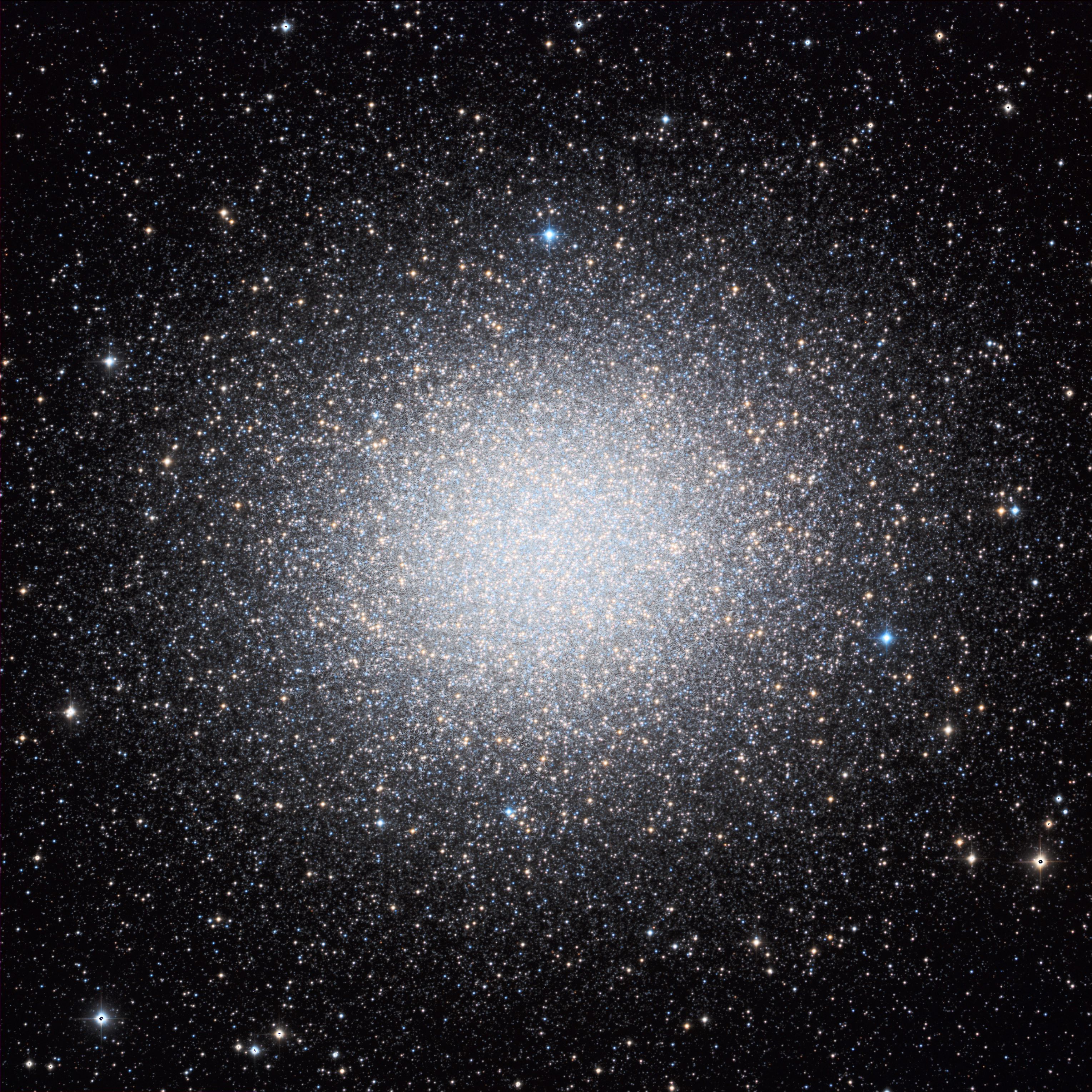 |
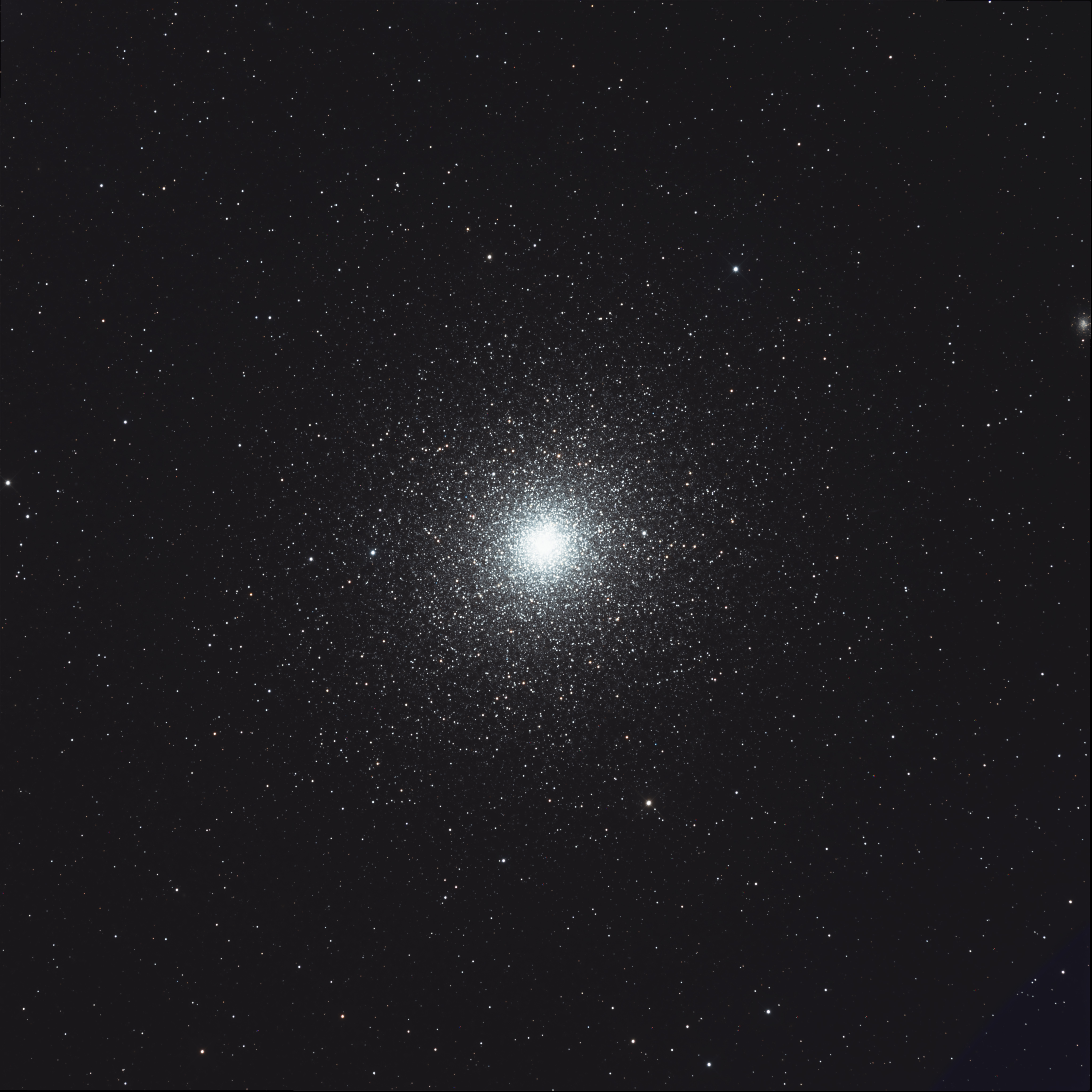 |
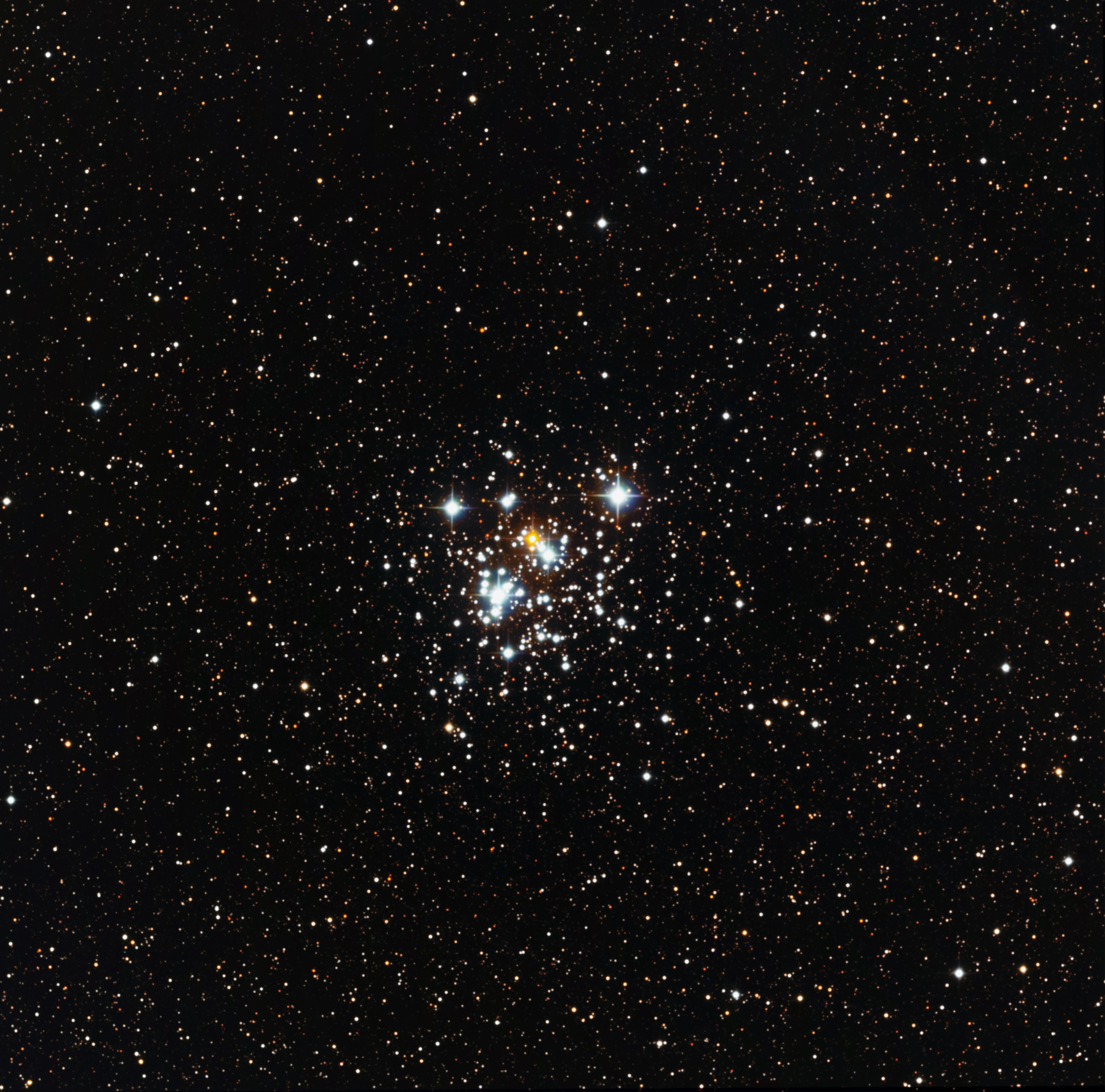 |
